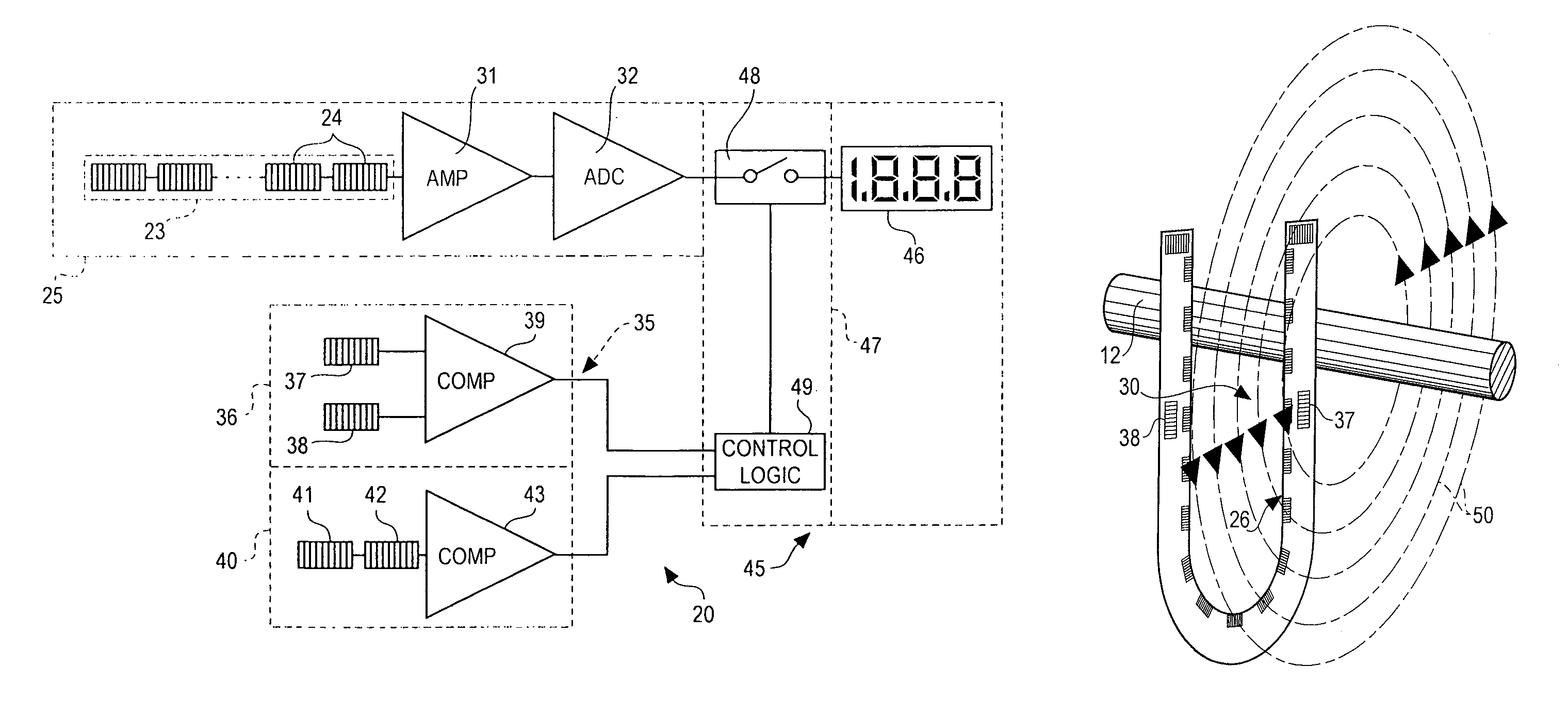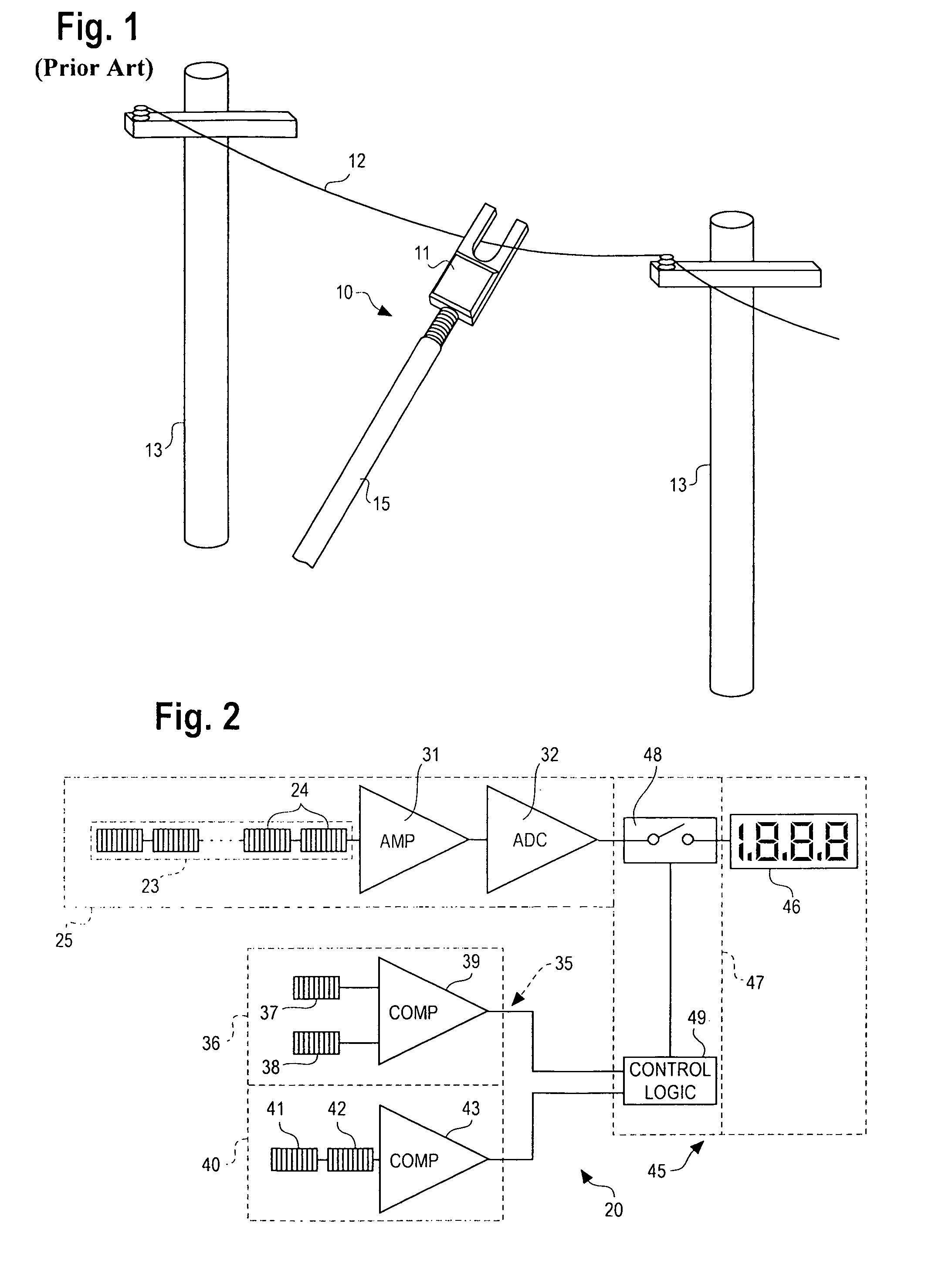Ammeter with improved current sensing
a current sensing and ammeter technology, applied in the field of ammeters, can solve the problems of mechanical complexity of opening and closing the hinged core, the weight of the iron core, and the inability to simply be placed around the conductor to be measured, so as to prevent display
- Summary
- Abstract
- Description
- Claims
- Application Information
AI Technical Summary
Benefits of technology
Problems solved by technology
Method used
Image
Examples
Embodiment Construction
[0027]Referring to FIG. 2, there is illustrated an ammeter, generally designated by the numeral 20, constructed in accordance with and embodying the features of the present invention. Referring also to FIG. 3, the ammeter 20 includes a sensing head 21, which includes a generally U-shaped substrate 22, which may be in the form of a printed circuit board, and will typically be disposed in a suitable U-shaped housing (not shown). The sensing head 21 carries a current-sensing coil structure 23 which includes a plurality of coils 24 arranged in a linear array extending along the U-shaped substrate 22 to form a generally U-shaped array including legs 26 and 27 interconnected at one end thereof by a bight 28. The opposite ends of the legs are spaced apart by a gap 29. The coils 24 of the current-sensing coil structure 23 are interconnected, as by printed circuitry, and form a part of a current-detecting circuit 25 (FIG. 2). The U-shaped array defines a sensing region 30 extending between t...
PUM
 Login to View More
Login to View More Abstract
Description
Claims
Application Information
 Login to View More
Login to View More - R&D
- Intellectual Property
- Life Sciences
- Materials
- Tech Scout
- Unparalleled Data Quality
- Higher Quality Content
- 60% Fewer Hallucinations
Browse by: Latest US Patents, China's latest patents, Technical Efficacy Thesaurus, Application Domain, Technology Topic, Popular Technical Reports.
© 2025 PatSnap. All rights reserved.Legal|Privacy policy|Modern Slavery Act Transparency Statement|Sitemap|About US| Contact US: help@patsnap.com



